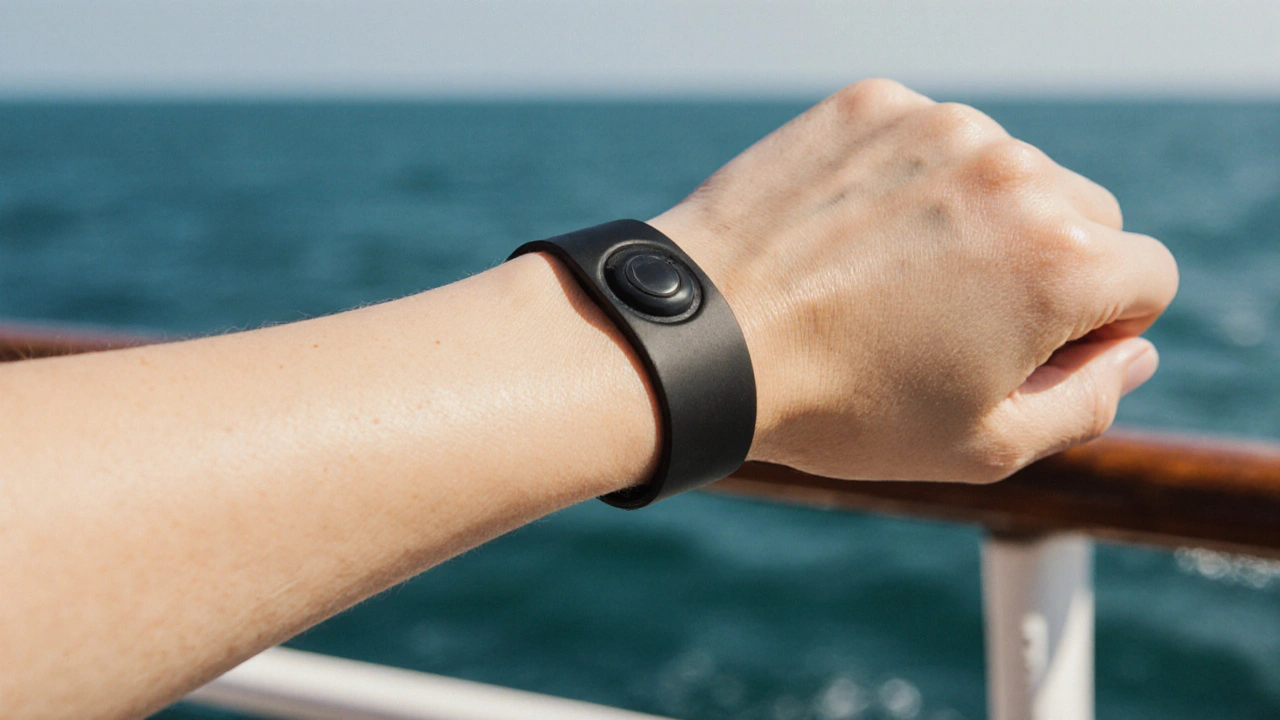Do Motion Sickness Bands Really Work? The Truth Revealed
Discover if motion sickness bands truly relieve nausea, see how they compare to meds and ginger, and learn when they work best for travel.
When dealing with travel nausea, the uneasy feeling of queasiness that hits you while on a road, sea, or air journey. Also known as motion‑induced nausea, it often shows up when your brain receives confusing signals from the vestibular system, the inner‑ear balance organ that tells you which way is up. The mismatch between what your eyes see and what your ears feel creates the classic swirl of dizziness and stomach upset. In many cases, motion sickness, a specific form of travel nausea, is the main culprit. Understanding these three entities—travel nausea, motion sickness, and the vestibular system—helps you see why certain remedies work and others don’t.
Managing travel nausea requires a mix of lifestyle tweaks and, when needed, antiemetic medications, drugs that calm the nausea center in the brain. Over‑the‑counter antihistamines like dimenhydrinate or meclizine are popular because they block signals from the vestibular system and reduce the brain‑gut mismatch. Prescription options such as scopolamine patches provide longer‑lasting relief for longer trips. Besides meds, staying hydrated is a must—dehydration can amplify the queasy feeling and make the stomach more sensitive. Light, bland snacks (like crackers) give your gut something to work on without overwhelming it. Some travelers swear by natural aids like ginger capsules or peppermint tea; these work by soothing the stomach lining and dampening the vomiting reflex. Timing matters too: taking an antiemetic before you start moving, not after the symptoms begin, often prevents the full onset of travel nausea.
Another useful tip is to control your visual environment. Looking at the horizon, focusing on a steady point, or sitting where you can see the road ahead reduces the sensory conflict that triggers the vestibular system. If you’re on a boat, staying on deck where the motion is felt directly can help; on a plane, choosing a seat over the wings offers the least turbulence. For those who get anxious about traveling, relaxation techniques—deep breathing, progressive muscle relaxation, or a short meditation—can lower the stress hormones that worsen nausea. Combining these practical steps with the right anti‑nausea medication creates a layered defense that many travelers find effective.
Below you’ll find detailed articles that dive deeper into specific anti‑nausea drugs, dietary tricks, and other tips to keep your journey smooth and symptom‑free.

Discover if motion sickness bands truly relieve nausea, see how they compare to meds and ginger, and learn when they work best for travel.